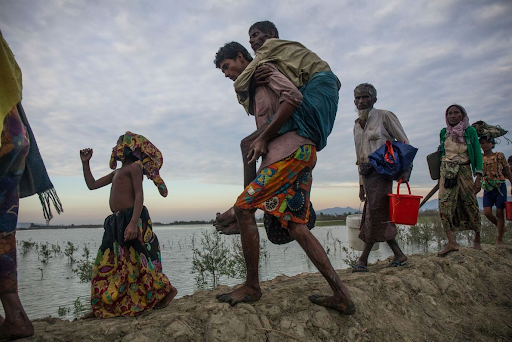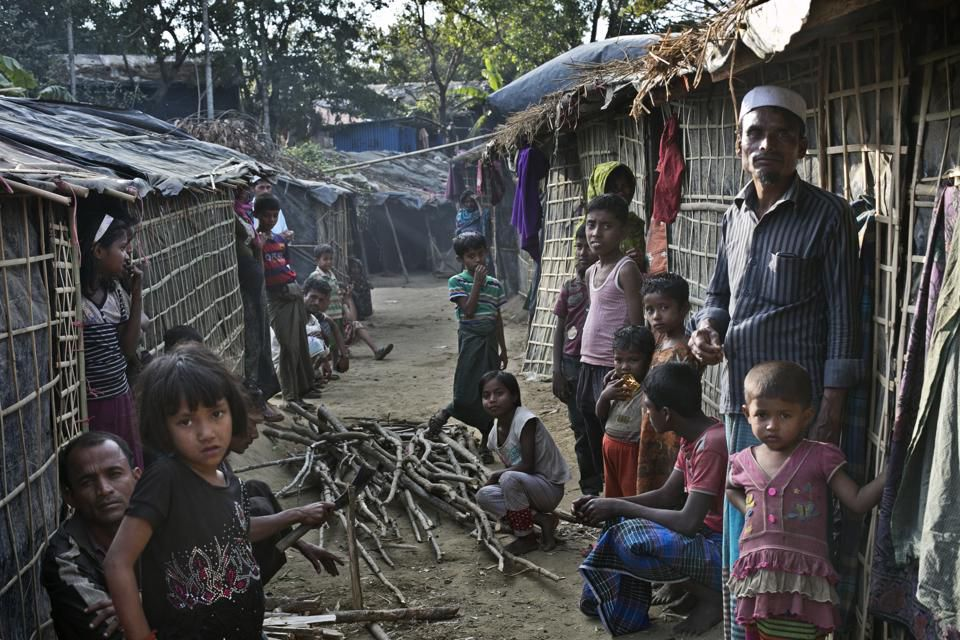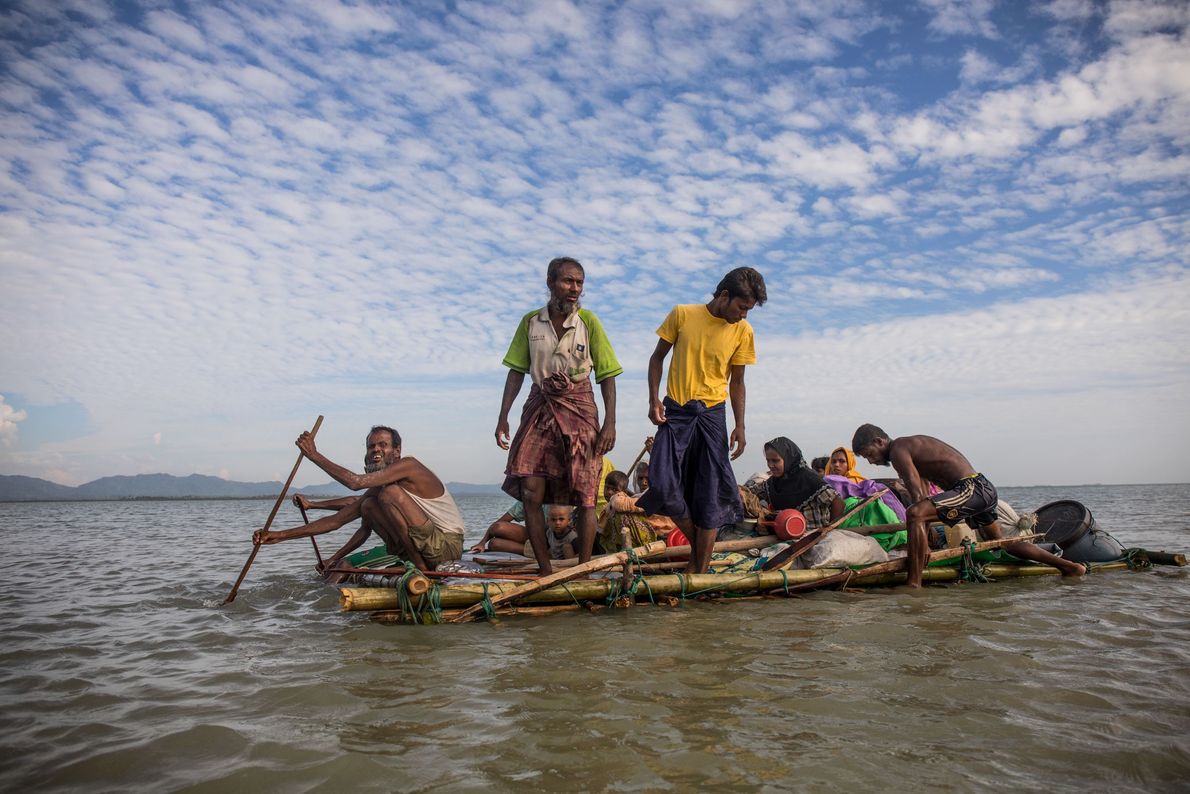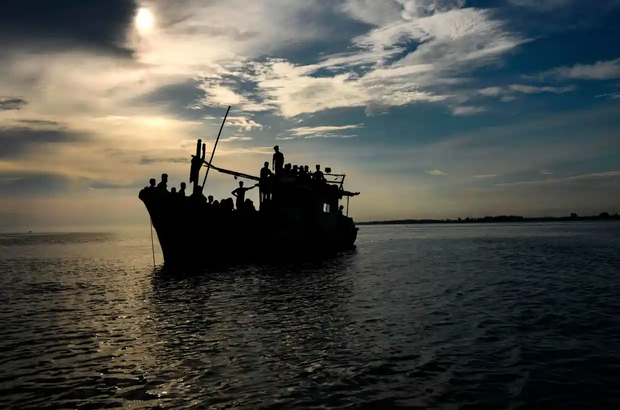ISABEL JACKSON details the ongoing struggle and persecution of the Rohingya.
Despite being ‘the most persecuted minority in the world’ according to the UN, the Rohingya receive an almost negligible amount of coverage in Western mainstream media. The Rohingya people are a Muslim minority ethnic group in Myanmar, who have been routinely discriminated against and terrorised by the Buddhist majority state. This continues despite the fact that the Rohingya have existed in the area for thousands of years. This hatred towards them culminated in what was effectively a genocide in 2017. Now they are left without future prospects or a nation to call home, forced into dependency on limited foreign aid. To outsiders, the problems facing the Rohingya may appear to have diminished since 2017. Yet this is far from true, with the Rohingya needing action and change now more than ever with the onset of COVID-19.
At the start of the decade, things were looking up for Myanmar. Nobel-Prize winner Aung San Suu Kyi was steering the country towards democracy and the country was emerging from totalitarian military rule. Yet despite her rhetoric of freedom, she turned a blind eye to the military’s treatment of the Rohingya and the persecution of journalists taking place within her country. Buddhist nationalism was rising, driven by the hate speech directed at Muslims from groups such as Ma Ba Tha. By late 2016, massacres, destruction of villages and gang rapes were regularly taking place in Myanmar’s Rakhine State. In September 2017, for example, the Inn Din massacre took place at the hands of the army. They defended their actions as ‘clearance operations’ due to supposed ‘Bengali Terrorists’, and faced no consequences for the torture and mass execution of villagers. Two Reuters journalists were arrested for their discovery of a mass grave in the village. The true extent of the genocide is unknown, but it is suspected that many more massacres remain hidden from Western media.

This terrorisation resulted in a mass exodus, with around one million Rohingya people now living in Cox’s Bazar refugee camp in Bangladesh alone. Myanmar denies the Rohingya citizenship, leaving them stateless and forced to live in impoverished conditions in refugee camps. Around 128,000 are living in camps in Myanmar following the destruction of their homes. These people are unable to leave the camps other than for a short walk and have no opportunity for a future in the outside world. The vast majority of Rohingya are unable to access healthcare, education or jobs and are effectively living in confinement, their futures entirely beyond their control. Their state of dependency has no end in sight.
Although widely covered during the refugee crisis of 2017, the Rohingya people’s current crisis receives drastically less attention. This drop in coverage does not correlate with their continued degree of suffering. For instance, despite the fact most Rohingya receive aid in the form of food vouchers and packages, malnutrition remains an immense problem and about a third of Rohingya children are malnourished. This stagnant problem of dependence on insufficient foreign aid is constantly neglected by news outlets in favour of stories which will gain more viewers and profit. The public contribute to this issue through the power of their interest, the media often irresponsibly producing what will gain views. This vicious cycle often leaves people of colour with disproportionately less mainstream attention in the West, ensuring a lack of awareness of the continuing plight of marginalised groups such as the Rohingya. It is vital that the media takes more responsibility for the incomplete picture of the world that they project. The Rohingya people need our attention.

Despair at the unbearable conditions and lack of future prospects in refugee camps causes many to risk their lives, attempting to cross into countries like Malaysia by sea. They face starvation on the journey across and are vulnerable to traffickers, who bribe them with the prospect of safety. Many Rohingya have been beaten and tortured after being captured. There is no light at the end of the tunnel for the ‘boat people’, as they are described in the media: if they are lucky enough to enter Malaysia, they face discrimination and hate speech due to rising antipathy towards immigrants. The Rohingya are often the scapegoat in Kuala Lumpur for crimes and a lack of housing and jobs.
Recently, the situation has only declined. In parts of Cox’s Bazar refugee camp, the population density is eleven times that of London and 151 bathing facilities are shared between over 25,000 people. This, of course, provides ample opportunity for the coronavirus to spread. There is also a lack of access to clean water, let alone soap, making containment of the virus even harder. Very little testing is taking place and there is a lack of information on COVID-19, since the Bangladesh government enforced an internet blackout in the camps due to ‘security concerns’. On top of this, monsoon season is beginning, which will cause flooding and landslides in the camp.
The virus has also eroded sympathy for the Rohingya attempting to escape Bangladesh. In April, for example, Malaysian authorities refused to allow two boats holding 500 people to dock. On attempting to re-enter Bangladesh the boats were also refused. The given reason for these actions was the virus. Furthermore, the Malaysian government has started to round up and detain refugees, mostly Rohingya, another action defended by fear of coronavirus. Exploiting the virus to justify xenophobic policy must not go unnoticed. Hundreds of Rohingya have been abandoned in their struggle to survive, many still stranded out at sea, simply due to a lack of empathy and human compassion. One boat was saved by Indonesian fishermen in June, a rare success story.

With the picture looking increasingly bleak, the need for international awareness of the Rohingya’s plight is stronger than ever. It is important that we take initiative and educate ourselves, even if Western media no longer places the Rohingya crisis in the headlines. Signing petitions and utilising social media can add to international pressure, in order to ensure that the Myanmar government can no longer deny the persecution, and so that the Rohingya’s human rights can be obtained. Immediate action is crucial.
Featured image source: theguardian.com.
Continued support and spread of awareness is necessary to protect the Rohingya. Here are some resources for you to donate, sign petitions and further educate yourself in order to help:
https://www.unicef.org.uk/donate/rohingya-refugees/
https://donate.unhcr.org/gb/rohingya/~my-donation
https://www.islamic-relief.org.uk/myanmar-emergency-appeal/
https://www.amnesty.org/en/get-involved/take-action/help-stop-the-violence-in-myanmar/
https://www.worldvision.org/refugees-news-stories/rohingya-refugees-bangladesh-facts
https://diy.rootsaction.org/petitions/bangladesh-must-end-internet-ban-in-rohingya-refugee-camps





